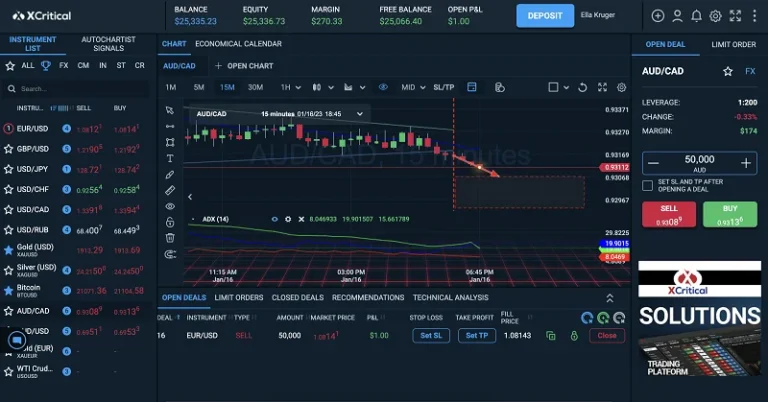Content
A consolidation phase is a period where a stock’s price trades within a narrow range, often following a significant movement. During consolidation, traders are assessing the stock’s future direction, leading to Stockbroker high volume as positions are built and adjusted without substantial price changes. This phase acts as a pause before the next big move, either up or down.
Which Technical Analysis Tools Can Make Trading Volume Analysis More Robust?
- For both buyers and sellers, sometimes the only opportunity to trade a position will be a news event that creates more liquidity for a short period of time.
- Position traders and long-term investors use weekly or monthly volume data to capture broader market trends and detect institutional activity.
- Supporting documentation for any claims will be furnished upon request.
- J.P Morgan online investing is the easy, smart and low-cost way to invest online.
- When price and OBV are moving up or down together, it is likely the trend will increase in strength.
- Price indicators focus on the stock’s price movements and trends.
Although we are not specifically constrained from dealing https://www.xcritical.com/ ahead of our recommendations we do not seek to take advantage of them before they are provided to our clients. Traders will look at pre-market volume to see which stocks may already be trading high volumes. Those with the highest relative volume indicators are potentially in play and worth a closer look.
Forex Trading For Beginners – The Best Tutorial For Currency Trading

CFI forex brokers by volume is the official provider of the Capital Markets & Securities Analyst (CMSA®) certification program, designed to transform anyone into a world-class financial analyst. Bond Accounts are not recommendations of individual bonds or default allocations. The bonds in the Bond Account have not been selected based on your needs or risk profile. You should evaluate each bond before investing in a Bond Account.

Why Does Trading Volume Matter?

One approach traders use to evaluate a stock is technical analysis. This trading method analyzes trends such as price shifts and volume to help investors assess stocks and identify opportunities to trade. Average daily trading volume (ADTV) is the average number of shares of a specific stock traded each day. To calculate it, you take the total volume of trades over a particular time period and divide that number by the number of days.
IG International Limited is licensed to conduct investment business and digital asset business by the Bermuda Monetary Authority. Funding for education can come from any combination of options and a J.P. Morgan Advisor can help you understand the benefits and disadvantages of each one.
We are entering the most bullish 6 consecutive months of the calendar, and so history might suggest that could happen. Of course, there may also be volatility in line, given multiple notable risks. This balance reflects the market’s uncertainty or neutrality regarding the news. Algorithms are programmed to take advantage of minute price discrepancies, often making small profits from each trade without triggering large price movements. However, when the price stays the same despite high volume, it means buyers and sellers are in a fierce tug of war. Despite this huge volume increase, there is evidence that liquidity access has not improved for institutional traders.
Volume, like any technical indicator, works best when used with forms of analysis rather than in isolation. Real traders, who transact in the market based on their own evaluations and expectations of market movements, only make up 10% of the total volume in US markets. The traders utilize trading volume as one of the factors used in their technical analysis while considering market trades. In recent days the most active securities in the market have been low-priced stocks, often affected in some way by the current macroeconomic turmoil. Additionally, though, widely held securities have seen massive, sustained volume increases. June’s average daily volume in the S&P 500 is 76% above the January 2020 average and 95% above the October 2019 average.
Sellers immediately come to the market and offer their selling price. As a result, with increased demand, the stocks’ price rises sharply, trading volumes increase to 300 stocks, and volatility increases. Trading volume is the number of shares of stock, bonds, commodities, or other financial instruments that change hands during a specific period. Like tracking foot traffic at a retail store, trading volume measures market activity and participation. On a typical trading day, blue chip stocks like Apple Inc. (AAPL) might see millions of shares traded, while smaller companies might only trade a few thousand shares.
A level above 80 is often considered overbought and below 20 oversold. These parameters, along with the period, are obviously adjustable. The MFI is an oscillator with a maximum of 100 and a minimum of 0. When positive money flow is relatively high, the oscillator approaches 100; conversely, when negative money flow is relatively high, the oscillator approaches 0. For example, if within the trading range, the oscillator rises during small advances and declines during small declines, it suggests that the eventual breakout will be upward, as seen in Figure 13.
Volume is updated throughout the trading session, giving you a real-time look at market activity. There are also some technical indicators that use volume, rather than price, as the central input. The Arms Index, for example, measures relative volume in advancing stocks versus declining stocks. A value below 1 for this index suggests bullish sentiment and a value above 1 indicates bearish sentiment. Algorithmic trading, or “algo trading,” involves using computer programs to execute trades at high speeds and volumes. These algorithms can be designed to trade within a specific price range, contributing to high volume without affecting the price.
Obviously this does not affect retail traders, but imagine hedge funds entering or closing a billion dollar position. And one way to mitigate that is to wait until there are more market participants to take the other end of your trade, just as at the end of the day. So this is a self-reinforcing trend that has begun in the markets and will likely stick around. The VWAP (Volume Weighted Average Price) indicator is the weighted average price of an asset for a certain period, weighted by total trading volume. It is used to determine the general trend direction of an asset and identify support and resistance levels.
Such passive investors utilize high-frequency algorithmic trading, which is a huge contributor to overall trading volumes in stock markets. Every market exchange tracks its trading volume and provides volume data. Volume of trade numbers may be reported as frequently as once every hour throughout one trading day. Trade volumes that are reported on an hourly basis are estimates. Similarly, the volume of trade reported at the end of a trading day is also an estimate. The actual figures are not made available until the following day.
In other words, it’s the dollar amount required to buy up all outstanding shares of a company, including restricted shares. Some investors may analyze volume as a part of a technical analysis strategy to help them make decisions about when to buy and sell a particular stock. Here’s a closer look at volume and how investors may be able to use it. Volume can indicate potential underlying weakness and be a timing indicator for potential breakouts.
